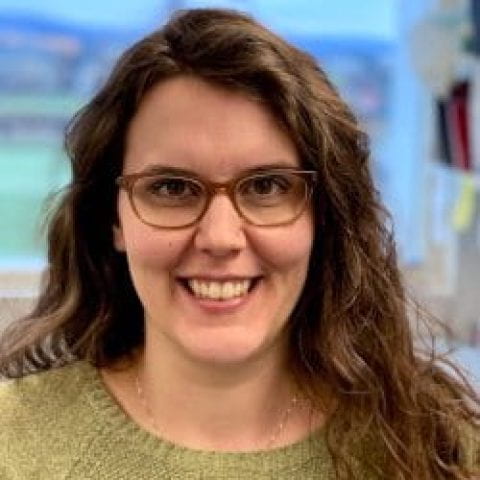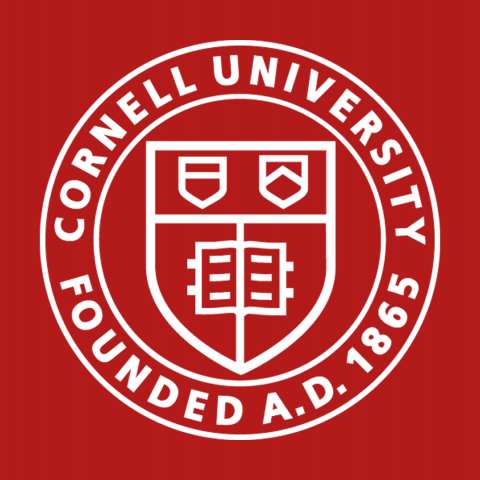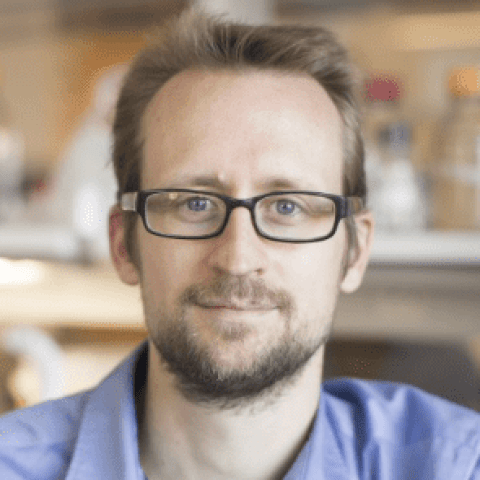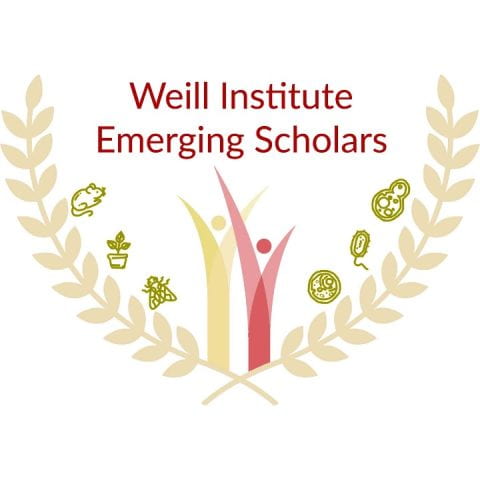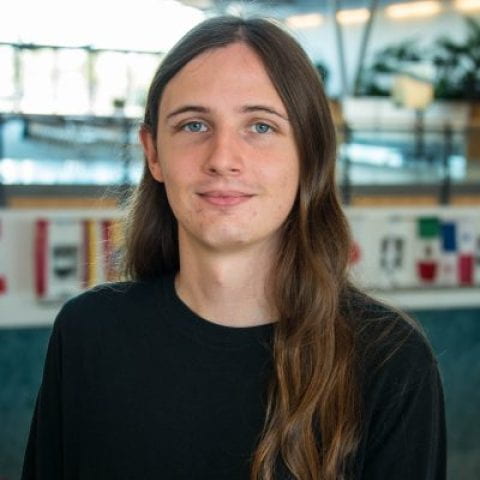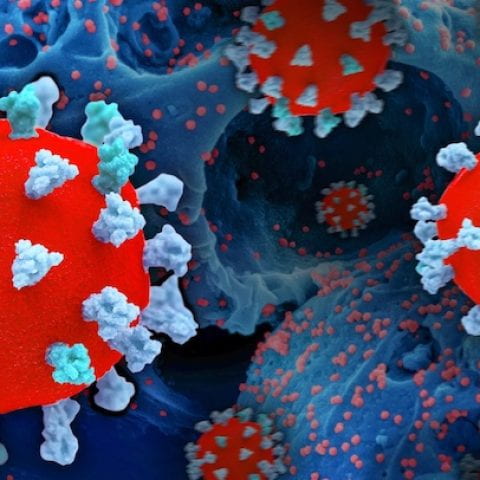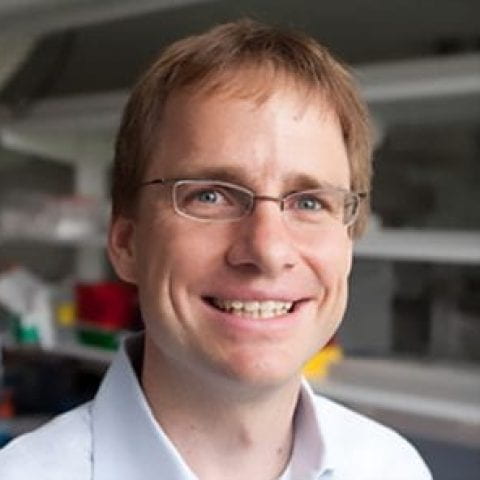News
Brittany White-Mathieu, an alumna of the Baskin Lab, was the recipient of a Blavatnik Regional Award for Young Scientists for advancing the field of chemical imaging to further our understanding of lipids, and their role in cellular function and disease, including cancer. She has created a revolutionary method, Lipid Expansion Microscopy, that enables super-resolution imaging of lipids within cells using widely available instrumentation. White-Mathieu’s work enables direct study of these compounds in cellular membranes where critical cell signaling events and nutrient exchange occur. White-Mathieu will begin a new faculty position at the University of New Hampshire in late August...
When a cell divides, faithfully replicating its DNA is essential – the life of the cell is on the line. This year’s recipient of the 2023 Harry and Samuel Mann Outstanding Graduate Student Award, Jumana Badar, is carrying out research to determine how cells ensure DNA is replicated correctly, a question that is central to how healthy cells reproduce and how drugs that make this process more difficult for the cell could be optimized to target cancer cells. , Click to open gallery view Credit: “I am honored and humbled to be chosen as this year’s recipient,” she said. “This award will enable me to seek out opportunities to gain new skills and exercise the ones I already have.” When cells replicate, the DNA strands must separate from one another to form what is called a...
Ari Broad received an Exemplary Service Award for Advanced Career Student at the 2023 Graduate Diversity & Inclusion Awards and Recognition Celebration. This award honors Ari’s demonstrated track record of exemplary service to the Cornell graduate and professional student community, especially in the areas of diversity, inclusion, outreach, and student...
Jawuanna McAllister received the 2023 Social Justice Award at the 2023 Graduate Diversity & Inclusion Awards and Recognition Celebration. This award honors Jawuanna’s demonstrated commitment to identifying and addressing inequities, creating avenues of access, advancing diversity and inclusion, and/or promoting human rights within and beyond...
Saket Bagde (Class of 2018) received 2022 Porter Prize for Research Excellence from the American Society for Cell Biology. This award is given to one graduate student on the basis of “individual scientific excellence, and the creativity and novelty of the research described.” Saket is mentored by Chris...
Saket Bagde (Class of 2018) was presented with the George P. Hess Travel Award for 2023. Saket is mentored by Chris Fromme, who nominated him for this...
The Doerr lab secured funding through the Mario Einaudi Center for International Studies to host a 2-week biotechnology workshop at the Institute for Bioscience and Biotechnology (RIBB) in Kathmandu, Nepal. The main goal is to outfit researchers at RIBB with crucial molecular biology expertise, to enable them to teach similar workshops in the future. We will couple this workshop with actual experiments to map antibiotic resistance genes and discover novel bacterial metabolism in Kathmandu’s main river, the Bagmati. This activity has a high potential to enable students to publish their findings in a peer-reviewed journal. Long-term, the workshop will help build a relationship with the emerging “University of Nepal” (UoN), with the long-term goal of integrating the workshop with...
Will Comstock (Class of 2019) has been awarded an NIH F31 grant – Ruth L. Kirschstein Predoctoral Individual National Research Service Award – through the National Cancer Institute. The purpose of this Kirschstein-NRSA program is to enable promising predoctoral students with potential to develop into a productive, independent research scientists, to obtain mentored research training while conducting dissertation...
Application deadline: April 15th, 2023 Introducing the inaugural Weill Institute Emerging Scholars Symposium on October 9th, 2023 To feature select senior Ph.D. Students spotlighting their research and academic...
With a $3 million National Science Foundation grant, Cornell researchers are creating a new approach to architecture by learning how plants and animals form internal structures....
Have you ever had a nasty infection that just won’t seem to go away? Or a runny nose that keeps coming back? You may have been dealing with a bacterium that is tolerant of, though not yet resistant to, antibiotics. Antibiotic resistance is a huge problem, contributing to nearly 1.27 million deaths worldwide in 2019. But antibiotic tolerance is a covert threat that researchers have only recently begun to explore. Antibiotic tolerance happens when a bacterium manages to survive for a long time after being exposed to an antibiotic. While antibiotic-resistant bacteria flourish even in the presence of an antibiotic, tolerant bacteria often exist in a dormant state, neither growing nor dying but putting up with the antibiotic until they can “reawaken” once the stress is gone....
William Comstock (Class of 2019) was awarded the Calvo TA Award for his role in the course BioMG 3320 at the MBG Awards Ceremony...
Roeder Lab graduate student, Byron Rusnak, highlighted by First Author Profile in Plant...
Saket Bagde is a doctoral candidate in biochemistry, molecular and cell biology from Nagpur, India. He earned his previous degrees at the Indian Institute of Science Education and Research Pune and University of Texas at El Paso and now studies the structure and function of complex molecular machines under the guidance of Chris Fromme at Cornell. What is your area of research and why is it important? The cells that make up living organisms contain countless moving parts that act as gears working to keep the cellular machinery functioning. Just as the shape of the gears in a car and how they fit with each other determines their function, the shape of the proteins determines their function. I study the structure and function of complex molecular machines. One of my projects is aimed at...
Saket Bagde, Fromme Lab graduate student, was awarded the annual Fred Hutchinson Cancer Center’s Harold M. Weintraub Graduate Student Award. This award recognizes exceptional achievement in graduate studies in the biological...
If anyone understands the importance of sunshine and fresh air, it is the Roeder Lab. Headed by Adrienne Roeder, an Associate Professor at the Weill Institute for Cell and Molecular Biology, and the Section of Plant Biology, School of Integrative Plant Science, the team studies the role that cell growth and division play in the diversity of cell size in the Arabidopsis, a flowering plant. Roeder’s group often enjoys outings together to areas on campus, especially to the arboretum, but occasionally visits other local parks and trails. “These breaks are very important because they give us a break from our routine, allowing us to connect with our fellow lab mates, with nature, and come back refreshed and revitalized,” says lab member Byron Rusnak. Venturing outdoors is a...
Graduate students Mauricio Paramo and Shagun Gupta, both researchers of the Yu Lab, led by Principal Investigator Haiyuan Yu, recently published a study revealing a comprehensive list of SARS-CoV-2-viral and human proteins that interact with each other in the pathobiology of COVID-19. These findings open doors to new research avenues for identifying potential treatments for the virus that can target protein-binding sites....
A newly discovered pathway relying on the production and modification of periplasmic oligosaccharides is required for proper cell-envelope homeostasis and antibiotic resistance in Gram-negative...
Drosophila has been a powerful model system for biological studies due to the wide range of genetic tools established for it. Among these tools, Gal4 is the most abundant, offering unparalleled tissue and developmental stage specificity for gene manipulation. In comparison, other genetic reagents are far fewer in choices. Here we present a genetic toolkit for converting Gal4 strains into LexA and Flippase transgenes through simple genetic crosses and fluorescence screening. We demonstrate the proof-of-principle by converting ten Gal4 lines that exhibit diverse tissue specificities and examined the activity patterns of the converted LexA and Flippase lines. Gal4-to-LexA and Flp conversion is fast and convenient and should greatly expand the choices of LexA and Flp for binary expression...
For nearly two decades, cellular responses to their environment—whether from chemical, molecular, or physical stimuli—have been well appreciated. These responses range from cell proliferation to differentiation, hypertrophy, migration, and even apoptosis.1–3 However, despite years of investigation, we are still learning how mechanical forces are first transmitted across the cell to sites of mechanotransduction, where they are transformed into biochemical signals, then propagated by signaling pathways, and finally translated into specific molecular processes that enable the cell to respond and adapt to the mechanical input. In particular, while it has long been hypothesized that extracellular forces transmitted to the nucleus via the cytoskeleton have the potential to alter the...

